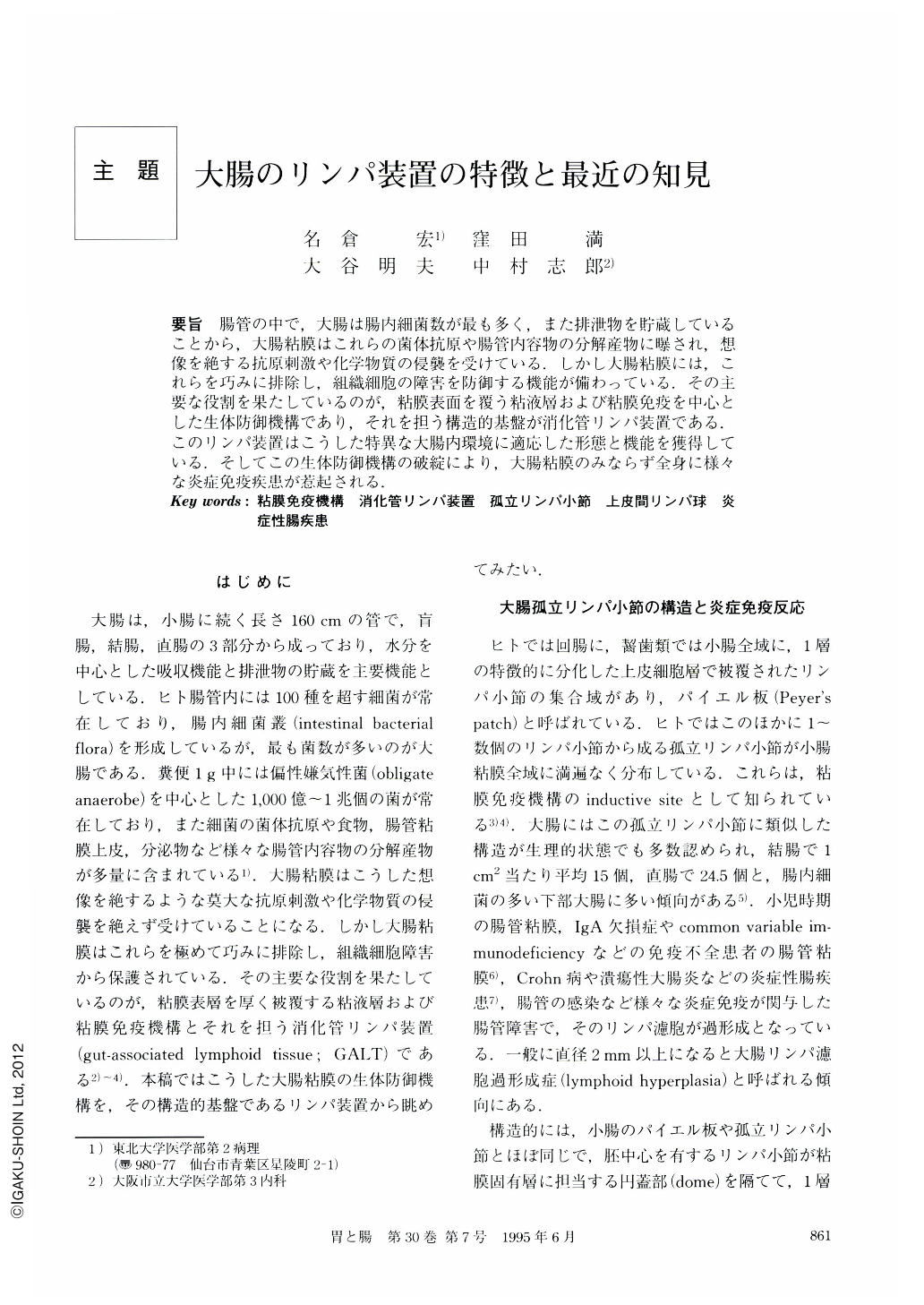Japanese
English
- 有料閲覧
- Abstract 文献概要
- 1ページ目 Look Inside
- サイト内被引用 Cited by
要旨 腸管の中で,大腸は腸内細菌数が最も多く,また排泄物を貯蔵していることから,大腸粘膜はこれらの菌体抗原や腸管内容物の分解産物に曝され,想像を絶する抗原刺激や化学物質の侵襲を受けている.しかし大腸粘膜には,これらを巧みに排除し,組織細胞の障害を防御する機能が備わっている.その主要な役割を果たしているのが,粘膜表面を覆う粘液層および粘膜免疫を中心とした生体防御機構であり,それを担う構造的基盤が消化管リンパ装置である.このリンパ装置はこうした特異な大腸内環境に適応した形態と機能を獲得している.そしてこの生体防御機構の破綻により,大腸粘膜のみならず全身に様々な炎症免疫疾患が惹起される.
The mucosal surface of the large intestine is exposed to a variety of antigens and chemical substances including dietary substances and microorganisms. A unique mechanism like the mucosal immune system exists in the mucosa for handling these myriads of antigens. Mucosal immune responses are generated by the lymphoid apparatus with which the intestinal lamina propria is equipped, and play an important role in the host defense at the mucosal site. The lymphoid apparatus in the large intestine has characteristic structures and immunological functions to deal with antigenic stimuli from the intestinal lumen.
The disorder in the mucosal immune system plays a part in the pathogenesis of certain diseases in the mucosal and non-mucosal organs.

Copyright © 1995, Igaku-Shoin Ltd. All rights reserved.


